Norman Rockwell’s “Four Freedoms” December 16, 2019
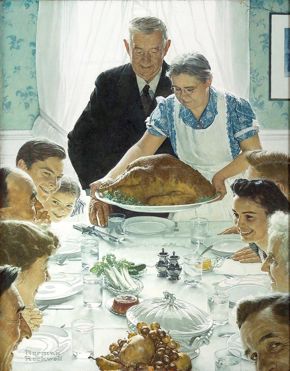
Norman Rockwell, Freedom from Want, 1943, oil on canvas, illustration for The Saturday Evening Post, March 6, 1943, collection of Norman Rockwell Museum. © SEPS: Curtis Licensing, Indianapolis. All rights reserved. www.curtislicensing.com
Norman Rockwell, Freedom of Speech, 1943, oil on canvas, illustration for The Saturday Evening Post, February 20, 1943, collection of Norman Rockwell Museum. © SEPS: Curtis Licensing, Indianapolis. All rights reserved. www.curtislicensing.com
Norman Rockwell, Freedom of Worship, 1943, oil on canvas, illustration for The Saturday Evening Post, February 27, 1943, collection of Norman Rockwell Museum. © SEPS: Curtis Licensing, Indianapolis. All rights reserved. www.curtislicensing.com
Norman Rockwell, Freedom from Fear, 1943, oil on canvas, illustration for The Saturday Evening Post, March 13, 1943, collection of Norman Rockwell Museum. © SEPS: Curtis Licensing, Indianapolis. All rights reserved. www.curtislicensing.com
Norman Rockwell, Golden Rule, 1961, oil on canvas, cover illustration for The Saturday Evening Post, April 1, 1961, collection of Norman Rockwell Museum. © SEPS: Curtis Licensing, Indianapolis. All rights reserved. www.curtislicensing.com
“Norman Rockwell: American Freedom” is the first comprehensive exhibition devoted to Norman Rockwell’s iconic 1943 depictions of FDR’s Four Freedoms.
Thankfulness radiates from American artist Norman Rockwell’s iconic holiday scene, Freedom from Want, in which three generations gather around the dining table to partake in a mid-afternoon meal. The gleaming bird, presented by the family matriarch, is the crowning glory of this feast, accompanied by a covered casserole dish, a plate of celery, cranberry sauce, and a bowl of fruit. Despite this appetizing spread, the people seated at the table do not gaze hungrily at the fare before them; instead, they appear to marvel at one another, rejoicing in the love and togetherness that fill the room. As the work’s title implies, there is no want.
Four Freedoms
The 1943 painting traces its inspiration back to the 1941 State of the Union address by President Franklin D. Roosevelt, in which he outlined four democratic values that he considered essential to preserve: freedom of speech, freedom of worship, freedom from want, and freedom from fear. These notions had neither an immediate nor resounding impact on the American public, but 11 months later their significance was transformed by the United States’ entrance into World War II.
Rockwell, a well-established illustrator for the Saturday Evening Post at the time, was eager to lend his talents to the ongoing war efforts. He first pitched his Four Freedoms idea to the Graphic Division of the War Department’s Office of Facts and Figures in May 1942, but the unit was unable to commit financially. He then traveled to Washington, DC, and proposed the series to the Office of War Information (OWI), only to be told, “The last war, you illustrators did the posters. This war, we’re going to use fine arts men, real artists.”
Iconic Illustrations
Feeling defeated, Rockwell headed home on the train to Arlington, Vermont, making a stop in Philadelphia to meet Ben Hibbs, his new editor at the Saturday Evening Post. Hibbs enthusiastically embraced Rockwell’s Four Freedoms concept. “Drop everything else,” Hibbs said. “Just do the Four Freedoms.” Rockwell was given eight weeks to finish the series; seven months later, they were complete. Each ran as a full-page interior illustration adjacent to an accompanying essay, authored by writers who expounded upon the images Rockwell had created.
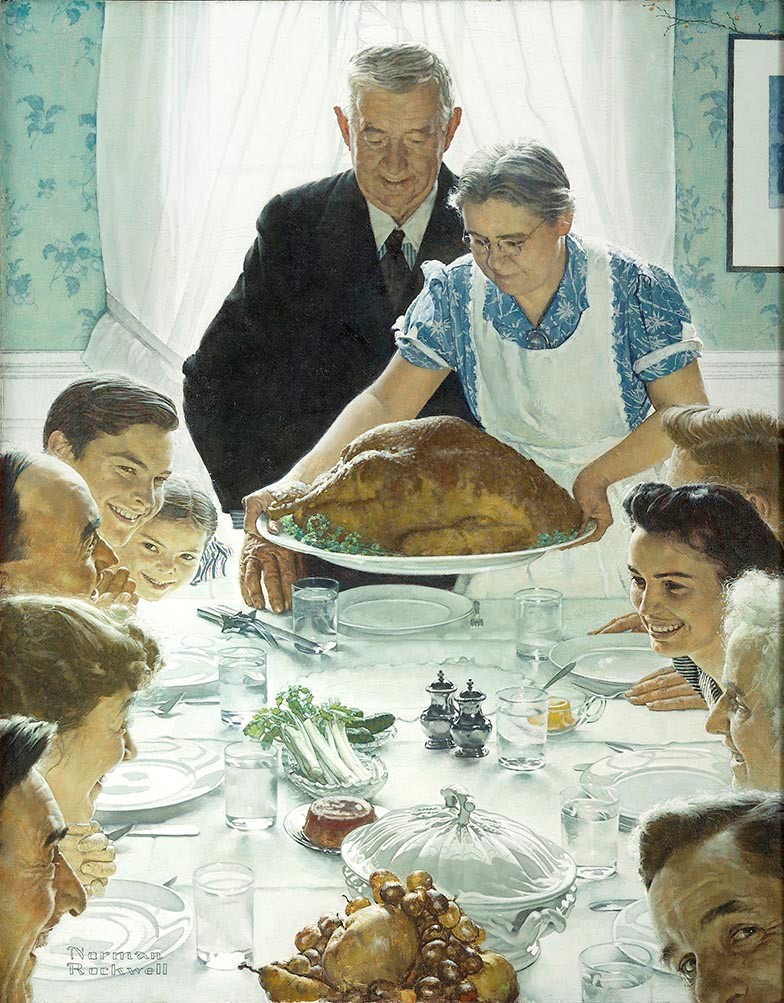
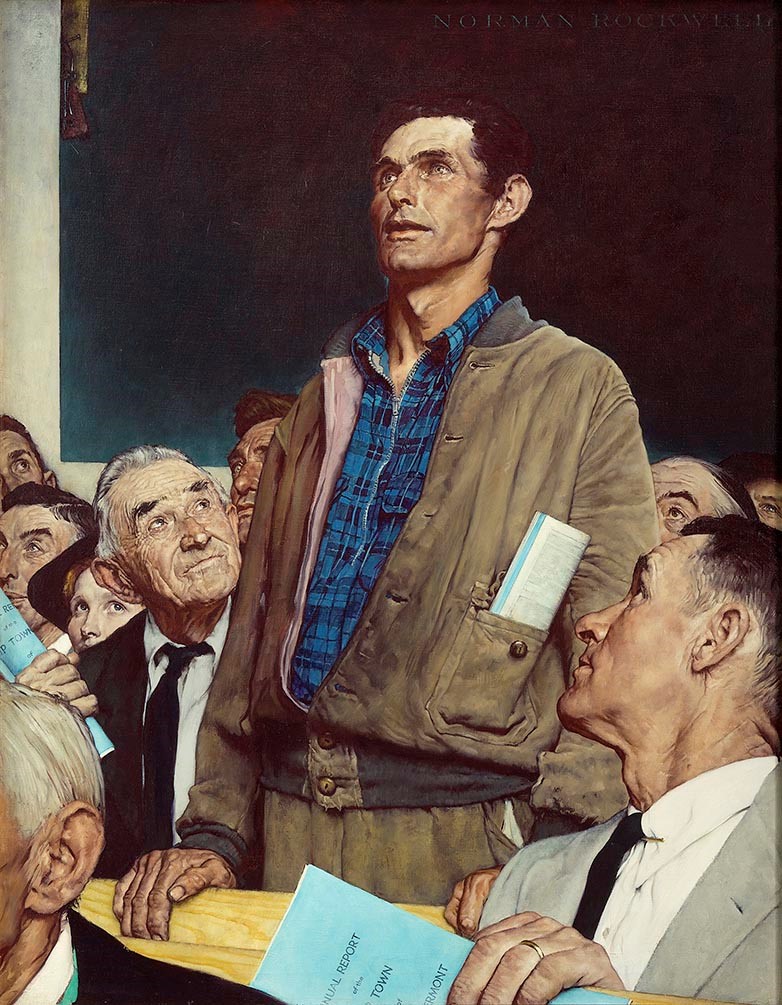
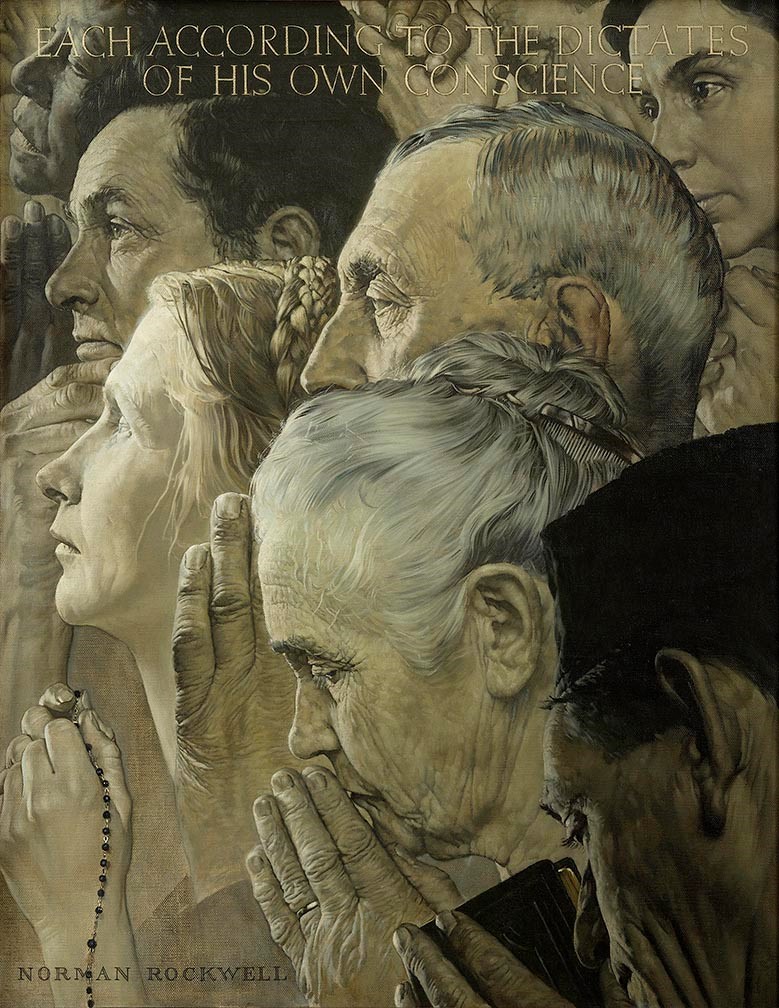
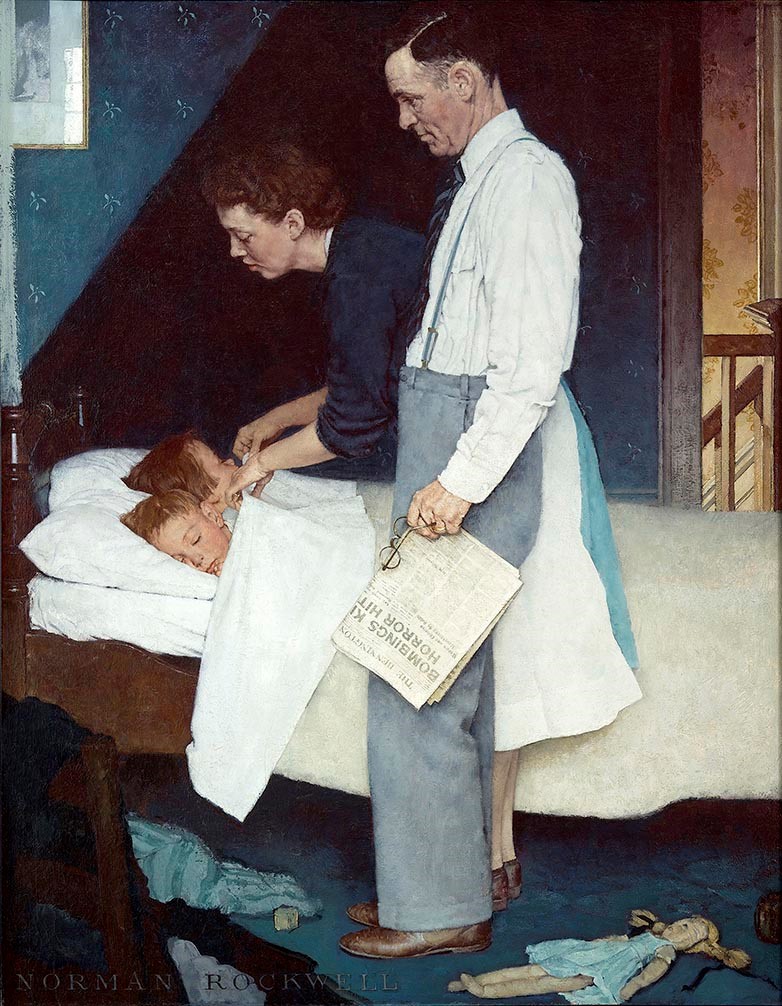
Left to right: Freedom from Want, Freedom of Speech, Freedom of Worship, Freedom from Fear
Technical Mastery
Rockwell’s quintessential family feast, Freedom from Want, was published on March 6, 1943. Although Rockwell claimed that it was the easiest of the Four Freedoms to complete, it is lauded for its technical mastery of white-on-white painting—white plates on a white tablecloth. The illuminated A-frame of smiling faces encapsulates virtue and familial love; yet, in real life, the individuals depicted were not biologically related. Rockwell instead formed the group from family (his mother, Nancy, and second wife, Mary), friends, and neighbors—including the Rockwells’ cook, Mrs. Thaddeus Wheaton, shown serving the turkey.
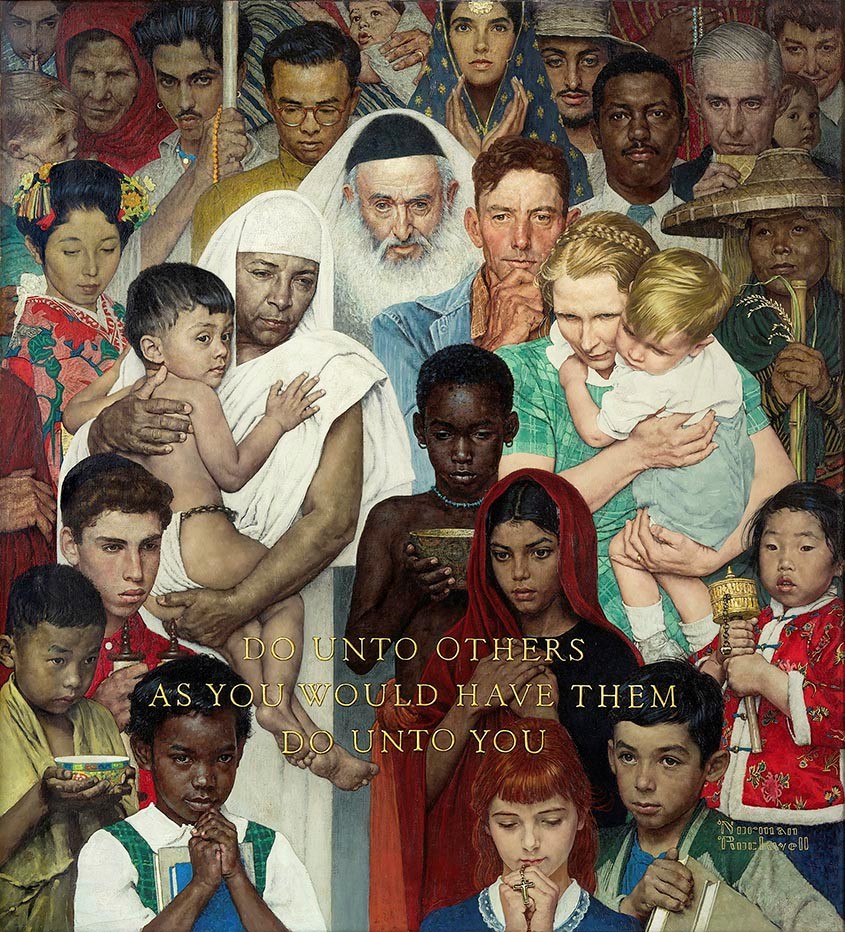
Golden Rule
The Real Meaning of Family
Because of his frequently mild subject matters, people commonly assume that Rockwell was politically conservative. In reality, the artist held many progressive views, but was beholden to the regulations of his employers, like the Saturday Evening Post. Upon first glance, Freedom from Want may read as a polished, white, middle-class, nuclear-family gathering, but, on a deeper level, the painting exemplifies the modern concept of chosen family, the idea that “family” is not validated through biological connection, but can comprise friends and neighbors who choose to play significant roles in each other’s lives. Freedom from Want also explores the question of whom we welcome at our table and into our lives—messages that anticipate Rockwell’s later works, such as Golden Rule in 1961, which take pro–civil rights stances.
► See “Norman Rockwell: American Freedom” in the Beck Building through March 22.





